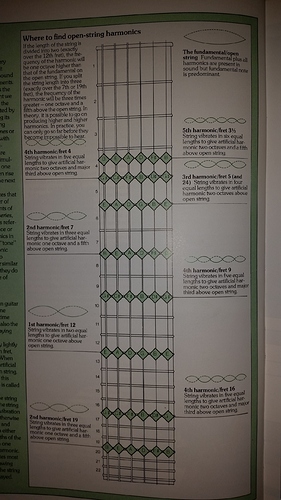There’s actually lots of harmonics that are at different points but there’s 6 main ones. Dividing the string length from your fretted hand to the bridge into 2, 3 4, 5, 6 and 7.
Players use different ones depending on which pitch they want.
There are 3 notes possible, root, a 5th up, a major 3rd up and combinations of all those together but some are 1 or 2 octaves above. So on an open E string you’ve got pitches E, B, G#, and combinations of all 3 together.
The one used by a lot of players for whammy bar dives is at fret 2.6 or 22 on an open string (E + G# on E string). That’s an Eddie Van Halen or Satch type dive but some use the 5th fret (3rd harmonic, G two octaves up on an open G string).
I hope you can read this ok it’s from an old book I’ve got. Doesn’t show the 2.6 free harmonic tho because I guess it’s not a single pitch so can’t be defined very well.
(I hope there’s no copyright issues with me posting it on here).
You will also find that a lot of players use the 2nd (octave and a 5th up) and 3rd (root note 2 octaves up) pinch harmonics in solos and riffs like Zakk Wylde and Steve Vai. If you fret on 12th fret - G string for example, you’ll find them just before or on the middle pickup on a strat.
Some tabs will give you the harmonic pitch, like B or G# or whatever or sometimes you will have to work it out from the musical notation by reading the note then it will say 8va or 15ma which means 1 or 2 octaves up respectively.





